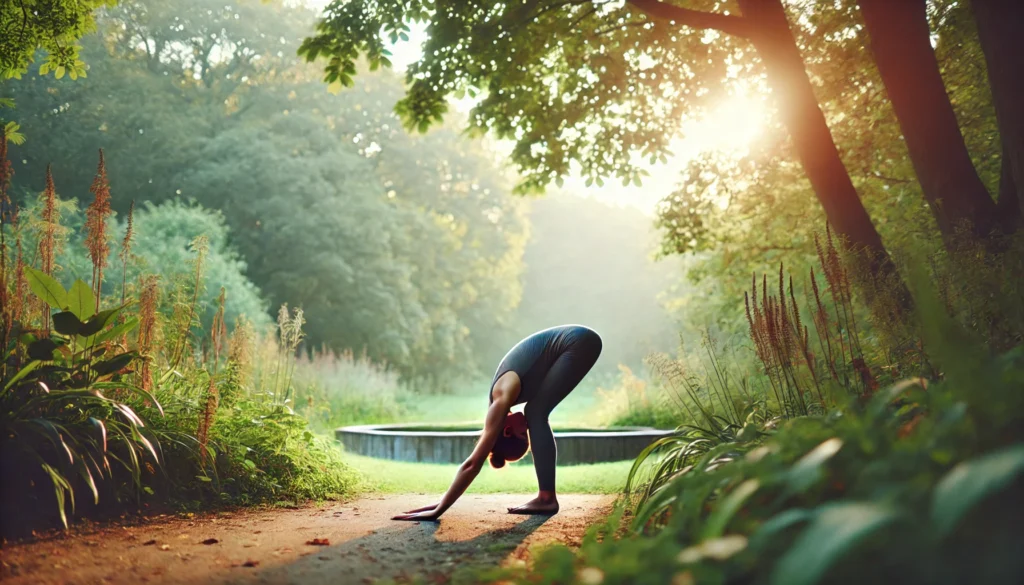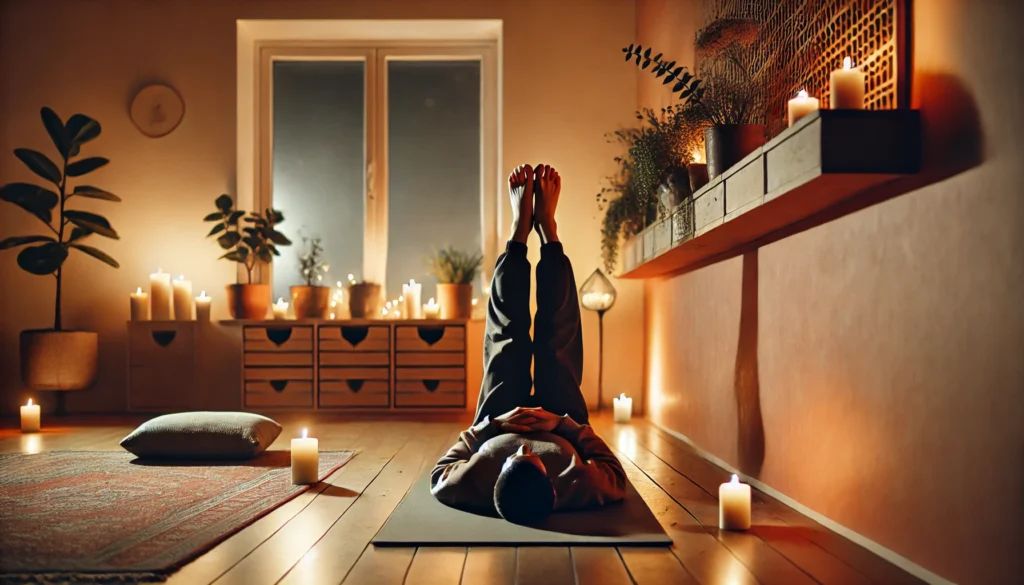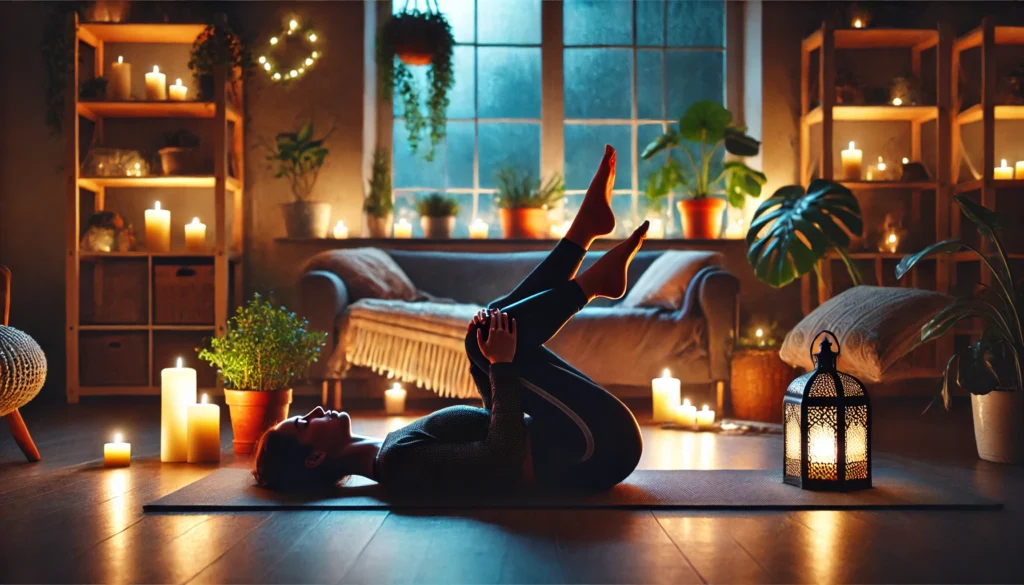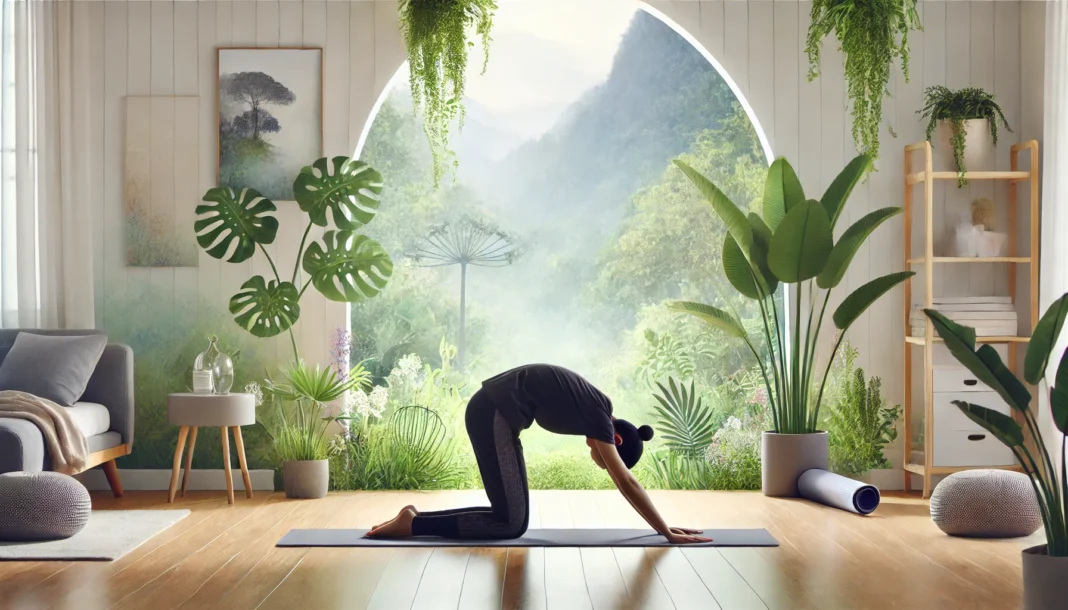Understanding Stress and Its Impact on the Body
Stress is an inevitable part of life, and while the human body is designed to handle short-term stressors, chronic stress can take a significant toll on both mental and physical well-being. Long-term stress contributes to elevated cortisol levels, increased muscle tension, and a constant state of physiological arousal, making relaxation difficult. Over time, chronic stress can lead to issues such as high blood pressure, insomnia, digestive problems, and emotional exhaustion. The good news is that yoga offers a natural, effective method for stress relief by promoting relaxation, enhancing circulation, and reducing tension in the body.
The neurophysiological effects of yoga provide an essential counterbalance to stress. By engaging in mindful movement, deep breathing, and meditative focus, yoga activates the parasympathetic nervous system, signaling the body to shift from a stress-induced state to one of rest and recovery. Stress relieving yoga asanas not only improve flexibility and physical resilience but also encourage mental clarity and emotional stability. Incorporating yoga for tension relief into a daily routine can significantly enhance overall relaxation and well-being, making it a powerful tool for managing stress effectively.
You May Also Like: Yoga for Stress Relief: Best Poses to Calm Anxiety and Restore Balance

The Science Behind Yoga for Stress Relief
Scientific studies have confirmed the effectiveness of yoga for stress management, demonstrating that regular practice helps lower cortisol levels, reduce inflammation, and improve mood. The deliberate movements and controlled breathing in yoga create a synergy that allows the nervous system to recalibrate, promoting equilibrium within the body. Researchers have found that yoga stretches for relaxation enhance vagal tone, which improves the body’s ability to regulate emotions and stress responses. Additionally, practicing yoga for tension relief stimulates the production of gamma-aminobutyric acid (GABA), a neurotransmitter associated with relaxation and reduced anxiety.
The meditative aspects of yoga also contribute to cognitive restructuring, allowing individuals to develop greater awareness of their stress triggers and adopt healthier coping mechanisms. By practicing yoga poses for stress relief, individuals cultivate a heightened state of self-awareness that extends beyond the yoga mat, enabling them to manage stressors more effectively in daily life. This integration of mind and body makes yoga an invaluable practice for those seeking sustainable stress reduction techniques.

The Best Yoga Poses to Reduce Stress and Tension
Child’s Pose (Balasana)
Child’s Pose is a foundational stress pose that encourages deep relaxation and introspection. By gently folding forward and allowing the forehead to rest on the mat, this posture soothes the nervous system and stretches the lower back and hips. The extended arms or relaxed hands alongside the body create a sense of surrender, signaling the body to release built-up tension. This calming yoga pose is particularly effective for quieting the mind and reducing anxiety, making it an ideal position for yoga relaxation.
Standing Forward Bend (Uttanasana)
Uttanasana, or Standing Forward Bend, is a stress relieving yoga asana that promotes a deep stretch in the hamstrings and lower back while increasing blood flow to the brain. The gentle inversion encourages relaxation by slowing the heart rate and calming the nervous system. As a yoga pose to release stress, Uttanasana is particularly effective in reducing mental fatigue and promoting a sense of groundedness.
Legs-Up-the-Wall Pose (Viparita Karani)
This deeply restorative yoga pose for stress involves lying on the back with the legs elevated against a wall. Legs-Up-the-Wall Pose helps reverse the effects of prolonged standing or sitting by encouraging venous blood return and improving circulation. By relaxing the lower body and allowing gravity to assist in lymphatic drainage, this position yoga relaxation method significantly reduces muscle tension and mental stress. Practicing Viparita Karani for even a few minutes daily can lead to profound relaxation and overall stress relief.
Cat-Cow Pose (Marjaryasana-Bitilasana)
Cat-Cow Pose is a dynamic yoga stretch for stress relief that involves transitioning between spinal flexion and extension. This rhythmic movement stimulates circulation, enhances spinal mobility, and releases stored tension in the back and shoulders. As one of the most effective yoga poses for stress relief, Cat-Cow Pose encourages mindful breathing and fosters a meditative state, making it an excellent practice for individuals dealing with chronic stress.
Seated Forward Bend (Paschimottanasana)
Seated Forward Bend is a calming pose that stretches the entire posterior chain while promoting introspection and relaxation. This yoga asana for stress relief encourages the release of muscular tension in the back and shoulders, reducing the physical manifestations of stress. By maintaining a slow, controlled breath during the pose, practitioners experience a deep sense of calm that extends beyond the practice itself.
Incorporating Yoga into a Stress Management Routine
Creating a consistent yoga practice designed for stress management requires intentionality and commitment. Attending yoga classes to encourage relaxation and stress reduction can provide guidance and structure, but personal practice at home is equally effective. Individuals seeking comprehensive stress relief should aim to practice yoga stretches for relaxation at least three to four times per week. Combining movement with meditation, such as engaging in a short mindfulness exercise after yoga, enhances the benefits and promotes long-term resilience to stress.
Pairing yoga with lifestyle modifications, such as proper hydration, nutrition, and adequate sleep, further optimizes its effectiveness in stress reduction. By integrating stress management yoga poses into daily life, individuals can cultivate a state of well-being that extends beyond their practice sessions. As with any wellness regimen, consistency is key to experiencing lasting benefits from yoga for tension relief.

Frequently Asked Questions (FAQ) on Yoga Poses for Stress Relief
1. How do stress relieving yoga asanas help regulate the nervous system?
Stress relieving yoga asanas activate the parasympathetic nervous system, shifting the body from a state of heightened stress to relaxation. By engaging in slow, deliberate movements and deep breathing, these poses counteract the effects of chronic stress and lower cortisol levels. Specific yoga poses for stress relief, such as Child’s Pose and Legs-Up-the-Wall Pose, signal the brain to release tension while improving circulation. Over time, consistent practice strengthens the body’s ability to regulate stress responses, reducing the physical toll of prolonged anxiety. Regular engagement with yoga for tension relief promotes long-term nervous system balance and emotional resilience.
2. What are the best yoga poses to reduce stress when working long hours?
For individuals working long hours, yoga poses to reduce stress should target areas prone to tension, such as the neck, shoulders, and lower back. Seated Cat-Cow Pose is an excellent stress pose that can be done at a desk to relieve spinal compression. Standing Forward Bend promotes circulation and eases mental fatigue by allowing fresh oxygen to reach the brain. Gentle spinal twists help release stored tension in the torso, while seated hip openers like Butterfly Pose relieve lower-body stiffness from prolonged sitting. Incorporating these yoga stretches for relaxation throughout the workday helps maintain focus and reduces stress buildup.
3. Can yoga poses that relieve stress improve financial decision-making?
Surprisingly, practicing yoga for tension relief can enhance financial decision-making by promoting a calm and focused mindset. Stress and anxiety often lead to impulsive financial choices, but engaging in calming yoga poses before evaluating financial matters fosters rational thinking. Forward bends, such as Seated Forward Bend, encourage introspection, helping individuals assess their financial priorities with greater clarity. Controlled breathing, combined with yoga stretches for stress relief, lowers heart rate and improves impulse control. By integrating stress relieving yoga asanas into daily routines, individuals can develop the emotional stability needed to make sound financial decisions.
4. Which yoga asanas for stress relief are best for improving sleep quality?
Poor sleep is a common consequence of chronic stress, but yoga asanas for stress relief can significantly improve sleep patterns. Legs-Up-the-Wall Pose enhances circulation and calms the nervous system, making it an ideal position yoga relaxation technique before bed. Supine spinal twists help release tension from the back and hips, areas that commonly store stress. Child’s Pose creates a sense of security and relaxation, while Reclining Bound Angle Pose gently stretches the groin and thighs to release muscular tightness. Practicing these yoga poses for relaxation in the evening prepares the body for deep, restorative sleep.
5. How do yoga poses for stress improve digestion?
Stress disrupts digestion by triggering the body’s fight-or-flight response, but yoga poses to release stress can help regulate gut function. Twisting poses, such as Seated Spinal Twist, stimulate digestion by massaging the abdominal organs and promoting healthy gut motility. Forward bends, including Standing Forward Bend, activate the vagus nerve, which enhances the parasympathetic response and supports digestion. Gentle belly breathing during stress management yoga poses reduces bloating and encourages optimal digestive function. Incorporating yoga for tension relief into daily practice fosters a balanced gut-brain connection, improving overall digestive health.
6. Can yoga classes to encourage relaxation and stress reduction be as effective as therapy?
While yoga should not replace professional therapy, yoga classes to encourage relaxation and stress reduction offer many therapeutic benefits. Many mental health practitioners integrate stress relieving yoga asanas into treatment plans due to their ability to regulate emotions and reduce anxiety. The mindful breathing techniques practiced in calming poses help individuals manage stress responses more effectively. Regular participation in yoga for tension relief can provide a supportive community, reducing feelings of isolation that often accompany stress and mental fatigue. When combined with other wellness practices, yoga poses for relaxation serve as a valuable tool for emotional and psychological healing.
7. What role do yoga poses that reduce stress play in workplace productivity?
Incorporating yoga poses for stress into a work routine can enhance productivity by reducing mental fatigue and improving concentration. Short stretching breaks, such as Standing Forward Bend and Shoulder Rolls, release muscle tension and restore energy levels. Deep breathing techniques practiced with yoga poses for relaxation improve oxygen flow to the brain, enhancing cognitive function. A calmer nervous system, supported by yoga for tension, allows employees to handle workplace challenges with greater clarity and efficiency. Many companies now offer yoga classes to encourage relaxation and stress reduction as part of their corporate wellness programs.
8. How do yoga poses to relieve stress benefit cardiovascular health?
Chronic stress contributes to high blood pressure and cardiovascular issues, but yoga poses to relieve stress can help protect heart health. Controlled breathing in yoga stretches for relaxation reduces heart rate and enhances blood circulation. Poses like Legs-Up-the-Wall and Supine Spinal Twist promote venous return, reducing the strain on the heart. Engaging in stress relieving yoga asanas lowers cortisol levels, minimizing the risk of stress-induced hypertension. Over time, yoga poses for stress relief strengthen heart function and support overall cardiovascular well-being.
9. How can beginners start a stress-relieving yoga practice at home?
For beginners, starting a home-based yoga for tension relief practice requires consistency and a simple approach. Begin with foundational yoga stretches for stress relief, such as Child’s Pose and Cat-Cow, to ease into mindful movement. Following guided videos focused on stress management yoga poses can provide structure and help establish a routine. Setting aside a quiet space and practicing calming yoga poses for 10–15 minutes a day gradually builds familiarity and effectiveness. Over time, expanding the practice to include breathwork and meditation will enhance its stress-reducing benefits.
10. What are the long-term benefits of practicing stress-relieving yoga asanas?
Long-term engagement with yoga for tension relief provides lasting physical, mental, and emotional benefits. Regular practice improves flexibility, posture, and muscular resilience, reducing the risk of chronic pain and tension-related injuries. Neurologically, yoga poses for stress relief enhance emotional regulation, making individuals more resilient to life’s stressors. Consistent practice fosters mindfulness, improving relationships, decision-making, and overall life satisfaction. By making yoga poses to relieve stress a lifelong habit, individuals cultivate a deep sense of balance and well-being.
Final Thoughts
Yoga is an invaluable practice for alleviating stress, promoting relaxation, and fostering overall well-being. By incorporating yoga poses for stress relief into a regular routine, individuals can reduce tension, enhance mindfulness, and cultivate emotional balance. The combination of movement, breath control, and meditation makes yoga a holistic solution for managing stress in a fast-paced world. Whether practicing in a studio or at home, embracing yoga for tension relief provides a natural and effective pathway to relaxation and mental clarity.
yoga poses, stress relief, calming yoga, relaxation techniques, yoga for anxiety, tension relief, mindfulness, deep breathing, yoga stretches, stress management, flexibility, nervous system balance, restorative yoga, cortisol reduction, emotional well-being, yoga for sleep, workplace stress, cardiovascular health, digestion support, holistic wellness
Further Reading:
Reducing Stress with Yoga: A Systematic Review Based on Multimodal Biosignals
The Effect of Yoga on Stress, Anxiety, and Depression in Women
How Does Yoga Reduce Stress? A Clinical Trial Testing Psychological Mechanisms

